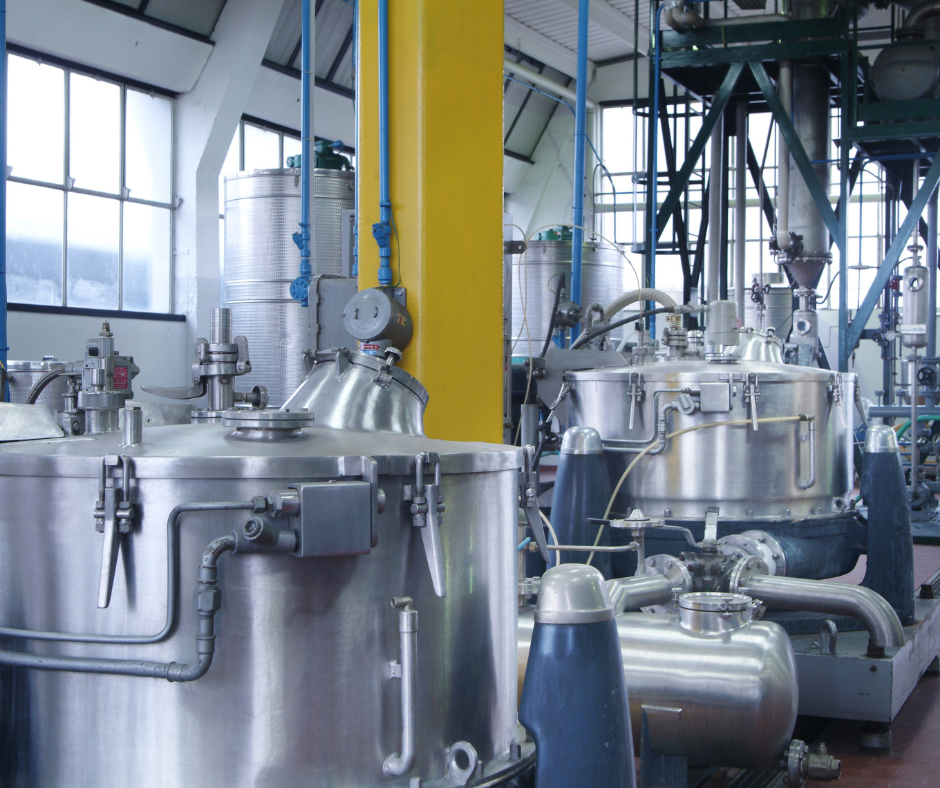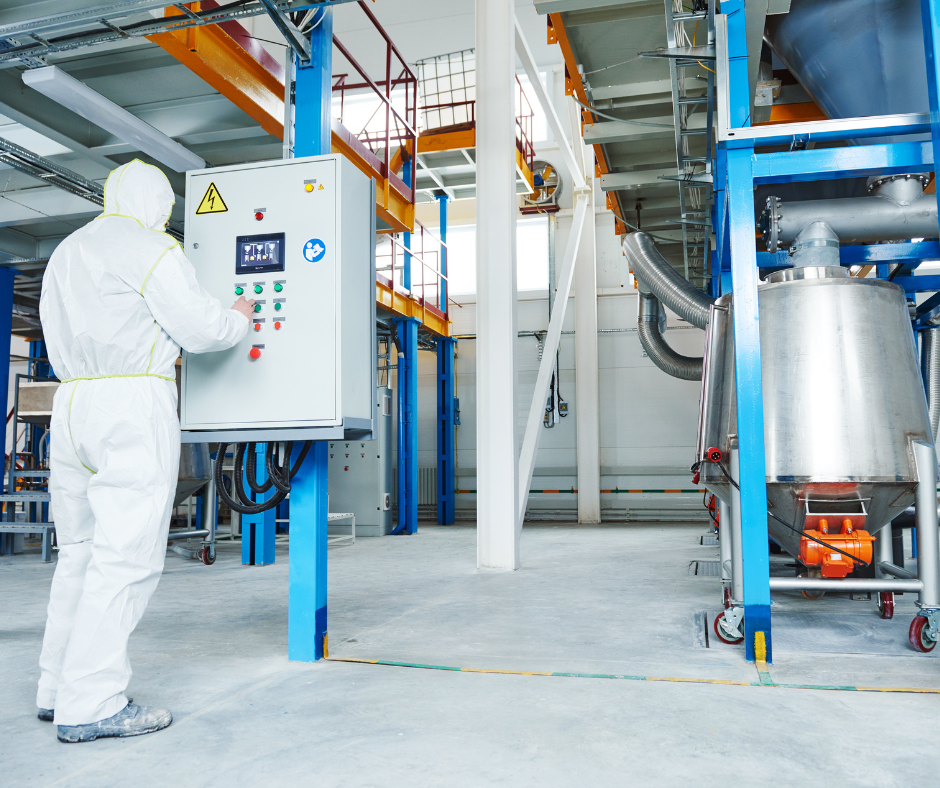Automation has become an increasingly important aspect of chemical manufacturing in recent years. As the demand for chemical products continues to grow, manufacturers are looking for ways to increase efficiency, reduce costs, and improve safety. Automation offers a range of benefits that can help chemical manufacturers achieve these goals, and in this article, we will explore some of the key benefits of using automation for chemical manufacturing in more detail below:
- Increased Efficiency
- Improved Safety
- Consistency
- Cost Savings
- Scalability
- Data Collection and Analysis
- Reduced Environmental Impact
- Improved Product Quality
- Increased Innovation
- Improved Working Conditions
- How can Deskera Help You?
- Conclusion
Increased Efficiency
One of the most significant benefits of using automation in chemical manufacturing is the increased efficiency it can provide. Automated systems can perform tasks quickly and accurately, reducing the time and resources needed to complete tasks. This, in turn, can lead to a more efficient manufacturing process overall.
For example, automated systems can be used to control and monitor the production of chemicals, from the mixing of raw materials to the final packaging of the finished product. Automated systems can also be used to regulate the temperature, pressure, and flow rates of different materials during the manufacturing process, ensuring that the process runs smoothly and without interruption.
In addition, automation can help to reduce downtime and improve the overall uptime of the manufacturing process. Automated systems can be programmed to perform regular maintenance and calibration checks, reducing the risk of equipment failure and downtime.
Improved Safety
Chemical manufacturing can be a hazardous process, with risks such as explosions, fires, and toxic exposure. However, automation can help reduce the risks associated with chemical manufacturing.
By automating tasks such as handling and mixing of chemicals, the risk of human error and accidents can be minimized. For example, automated systems can be used to handle and transport chemicals in a safe and controlled manner, reducing the risk of spills or exposure to toxic substances.
In addition, automated systems can be equipped with sensors and alarms that can detect and respond to potential safety hazards in real-time. This can help to prevent accidents before they occur, reducing the risk of injury or damage to equipment.
Consistency
Automated systems can provide consistent quality and quantities of products. By eliminating human error, automated systems can help to maintain consistent manufacturing processes, resulting in high-quality products. This is particularly important in the chemical manufacturing industry, where consistency is critical for ensuring product quality and safety.
For example, automated systems can be used to regulate the temperature and pressure of chemical reactions, ensuring that the reactions occur consistently and produce the desired product. Automated systems can also be used to monitor the composition of products, ensuring that they meet the required specifications.
Cost Savings
Automation can help reduce labor costs by replacing manual labor with automated systems. In addition, automation can help reduce waste and improve efficiency, leading to cost savings over time.
For example, automated systems can be used to optimize the use of raw materials, reducing waste and minimizing the cost of production. Automated systems can also be used to control the energy consumption of equipment, reducing energy costs and improving the overall efficiency of the manufacturing process.
In addition, automation can help to reduce the time and resources needed for training and retraining personnel. This can help to reduce labor costs and improve the efficiency of the manufacturing process overall.
Scalability
Depending on the manufacturer's needs, automated systems can be scaled up or down. This makes it easier to adjust production to meet changing market demands or scale production in response to increased demand.
For example, automated systems can be used to adjust the production rate of a manufacturing process to meet changing demand. This can help to ensure that the manufacturer can respond quickly to changes in the market and maintain a competitive edge.
In addition, automation can help to reduce the time and resources needed to expand or modify the manufacturing process. This can help to reduce the overall cost of scaling up production and improve the efficiency of the manufacturing process.
Data Collection and Analysis
Automation can help manufacturers collect and analyze data related to their production processes. This can provide valuable insights that can be used to optimize production, improve product quality, and reduce costs.
For example, automated systems can be used to collect data on equipment performance, such as the temperature, pressure, and flow rates of materials during the manufacturing process. This data can be used to identify areas for improvement and optimize the manufacturing process.
In addition, automation can help to collect data on product quality, such as the composition and purity of products. This data can be used to ensure that products meet the required specifications and improve the overall quality of the product.
Furthermore, automation can help to integrate data from different parts of the manufacturing process, providing a more comprehensive understanding of the process as a whole. This can help to identify potential bottlenecks and inefficiencies in the manufacturing process and provide insights into how to optimize the process.
Reduced Environmental Impact
Automation can help to reduce the environmental impact of chemical manufacturing by optimizing the use of raw materials and reducing waste. By automating the manufacturing process, it is possible to reduce the amount of raw materials needed to produce a given product, as well as reduce the amount of waste generated during the manufacturing process.
In addition, automation can help reduce equipment's energy consumption, reducing the manufacturing process's carbon footprint overall. This can help improve the manufacturing process's sustainability and reduce the industry's environmental impact as a whole.
Improved Product Quality
Automation can help improve chemical products' quality by ensuring that they are produced consistently and to the required specifications. By eliminating human error and variability in the manufacturing process, automated systems can help to ensure that products are of consistently high quality.
In addition, automation can help to detect and correct quality issues in real time, reducing the risk of defective products reaching the market. This can help to improve customer satisfaction and reduce the cost of product recalls and returns.
Increased Innovation
Automation can help to facilitate innovation in chemical manufacturing by enabling manufacturers to experiment with new processes and materials in a controlled and efficient manner. Automating the manufacturing process allows for testing new methods and materials more quickly and efficiently without requiring extensive manual labor or equipment modification.
This can accelerate the development of new products and processes, leading to increased innovation and competitiveness in the industry.
Improved Working Conditions
Automation can improve working conditions for employees in the chemical manufacturing industry by reducing their exposure to hazardous chemicals and reducing the need for manual labor. Automating tasks such as handling and mixing chemicals makes it possible to reduce the risk of exposure to toxic substances.
In addition, automation can help to reduce the physical strain on workers, reducing the risk of repetitive strain injuries and other musculoskeletal disorders.
How can Deskera Help You?
Deskera's integrated financial planning tools allow investors to better plan their investments and track their progress. It can help investors make decisions faster and more accurately.
Deskera Books can assist you in automating your accounting and mitigating business risks. Deskera makes it easier to create invoices by automating many other procedures, reducing your team's administrative workload.
Deskera also offers a suite of integrated applications to help businesses manage their financials, inventory, and operations. Furthermore, other business aspects such as HR (Deskera People), CRM (Deskera CRM), and ERP are provided by Deskera. These could be crucial and can help short sellers keep track of their businesses and make better decisions.
Conclusion
In conclusion, automation offers a range of benefits for chemical manufacturing, including increased efficiency, improved safety, consistency, cost savings, scalability, data collection and analysis, reduced environmental impact, improved product quality, increased innovation, and improved working conditions.
As the demand for chemical products continues to grow, manufacturers need to adopt automation to remain competitive and meet the evolving needs of the industry. By embracing automation, chemical manufacturers can improve their manufacturing processes' efficiency, safety, and sustainability, leading to better products and increased profitability.
Related Articles












